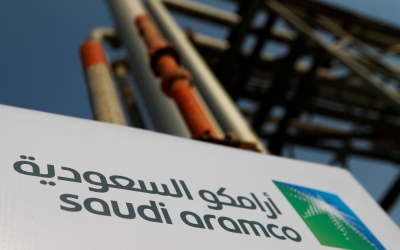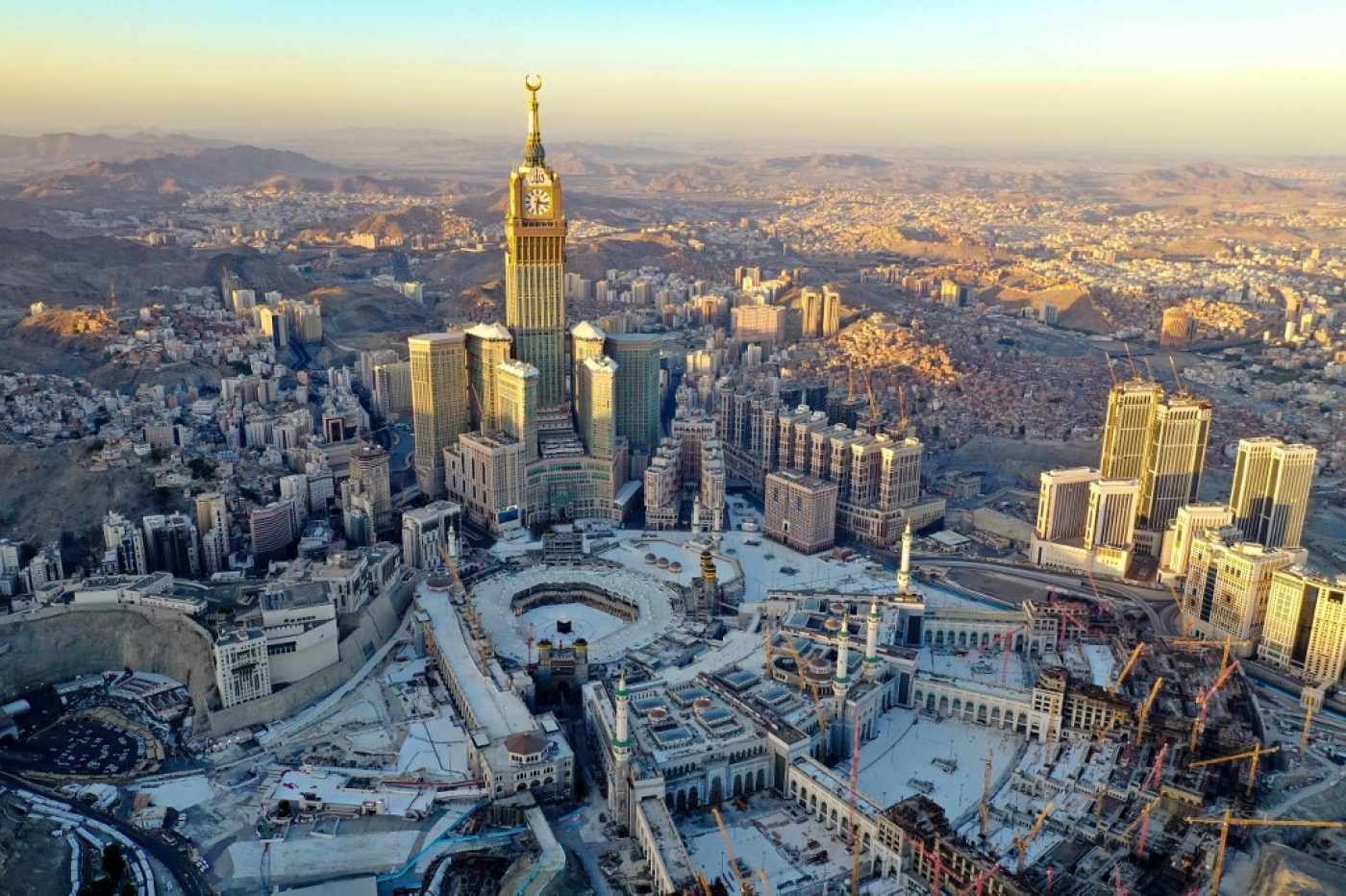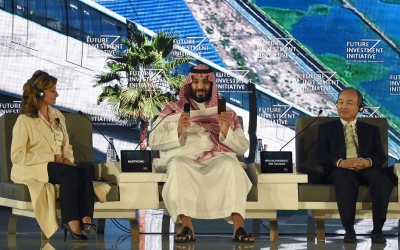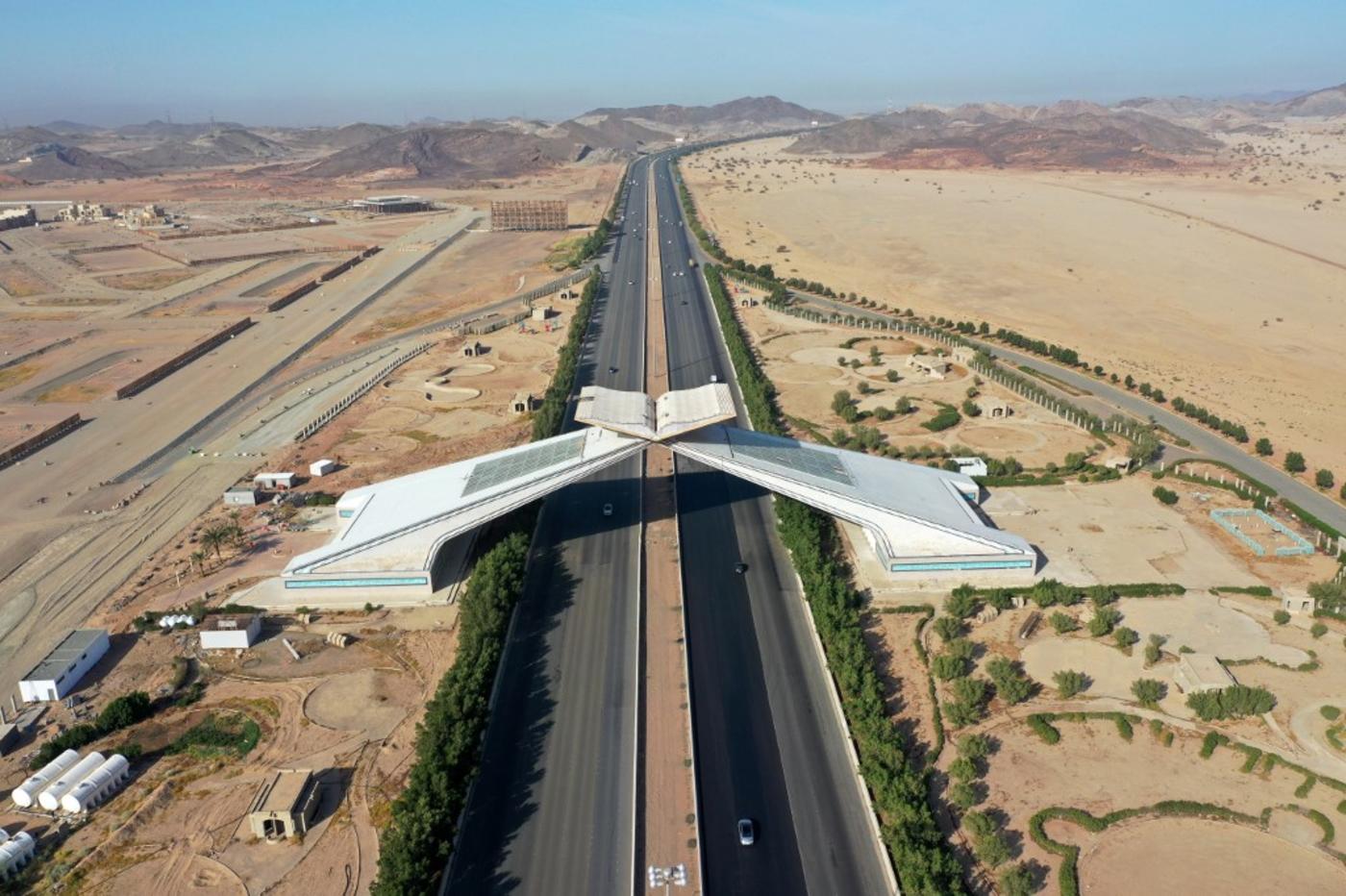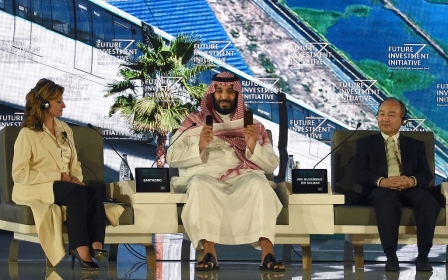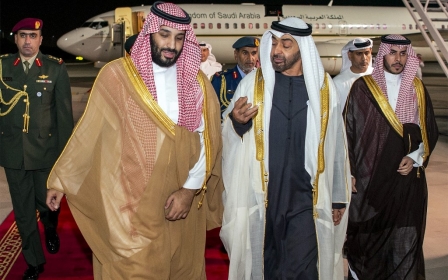Mohammed bin Salman's Vision 2030: Can Saudi Arabia afford it?

“All success stories start with a vision” was blazoned across huge posters of Saudi Arabia’s crown prince in Seoul last year when Mohammed bin Salman made his first state visit to South Korea.
The slogan appears to have been directly lifted from a Saudi media consultant “applauding” the announcement of Vision 2030 by Mohammed bin Salman in 2016 to the Arab News, “to lead us to a bright future”.
But as the Vision plan starts its fifth year - and with a decade to go - the kingdom is reeling from the dual shocks of low oil prices and the economic fallout from the Covid-19 pandemic. Is there light at the end of the tunnel for Vision 2030?
When the Vision was announced to much fanfare by the then-deputy crown prince, figures were thrown around of $1tn to be invested in mega projects, and another $1tn to be attracted in foreign investment. The Public Investment Fund’s (PIF) assets would reach $2tn by 2030, it was predicted.
What is Saudi Arabia's Vision 2030?
+ Show - HideVision 2030 was announced in 2016 with three main pillars to create a "vibrant society, a thriving economy, and an ambitious nation." Out of the 33 headings in the Vision, 14 deal with the economy, 11 with social issues, and eight with adminstration.
Goals range from the more prosaic - doubling the number of Saudis exercising each week, raising personal savings, and having three cities among the top 100 ranked globally – to the highly ambitious:
- Increase non-oil GDP from 16 percent to 50 percent
- Reduce unemployment from 12 percent to 7 percent
- Attract $1 trillion in foreign investment
- Attract 1.2 million (non-religious) tourists, and 30 million pilgrims a year
- Develop 5,000 projects, including Neom, a 26,500 sq-km, $500m futuristic city
- Develop a $67bn minerals sector
- Raise the Public Investment Fund’s assets to $2 trillion
The non-oil sector’s contribution to government revenues was to increase six times, to $267bn, and non-oil exports were to treble from 16 percent to 50 percent of GDP. Overall, Vision 2030 aimed at opening up the country, privatising parts of the economy, reducing subsidies, attracting investors and weaning dependency off oil.
New MEE newsletter: Jerusalem Dispatch
Sign up to get the latest insights and analysis on Israel-Palestine, alongside Turkey Unpacked and other MEE newsletters
While reforms have been tried before (nine five-year plans since 1970), the incentive for the kingdom to do so this time was becoming more pressing: only 42 percent of the population participate in the workforce, while an estimated 300,000 to 400,000 Saudi citizens enter the job market every year.
Back in 2016, the kingdom had some $700bn in foreign reserves, oil prices were higher, and the young prince known commonly as MBS was riding high on his enhanced role in the royal court. The Vision, while questioned by many, did not seem to be totally unviable, at least financially.
But the dual shock of Covid-19 and low oil prices, half of what they were last year, has squeezed the kingdom's finances. In March and April, foreign reserves declined by $48.6bn - the largest monthly declines on record - to $448.6bn.
Even before the pandemic, all was not going so well, not just because of the current economic slowdown due to the pandemic. Perhaps tellingly, the Vision 2030 website has not updated its ‘Vision Progress’ section – in either Arabic or English - since 2018.
Where the Vision has worked has been more widely told, such as women being allowed to drive and the opening of cinemas.
“Saudi Arabia is a different place to five years ago. In a social sense, they have made big achievements, but now comes the real test,” said Theodore Karasik, a senior advisor to Gulf State Analytics, a Washington-based consultancy.
Spluttering economy
The three pillars of the Vision are a "vibrant society, a thriving economy, and an ambitious nation". The economy, however, has spluttered along rather than thrived.
Unemployment of nationals has remained high over the last few years, at around 12 percent, while the economy grew by just 0.3 percent in 2019. The non-oil economy did grow, by 3.3 percent, its strongest performance since 2014, according to data from the General Authority for Statistics, but the impact of low oil prices and Covid-19 is expected to reverse such gains. Ratings agency Fitch expects the non-oil economy to contract by four percent this year.
This is bad news for economic diversification. Three sectors - retail, transportation and construction - account for more than 60 percent of the private sector, according to monetary authority SAMA, and all have been hit by the pandemic due to the lockdown, while the trebling of VAT and the cut in living allowances will further subdue economic sentiment. The retail sector alone employs some two million people and contributes 14 percent to the GDP.
Construction had started to rebound in 2019 after a four-year lull, but is forecast to drop this year. Indicative of the decline is the kingdom’s biggest firm, the BinLaden Group, restructuring $15bn in debt and laying off workers. The group laid off 50,000 employees in 2016.
Start-ups and small businesses, which were supposed to generate 35 percent of GDP by 2030, have also taken a beating. According to a research report by Wamda and Arabnet, two-thirds of Saudi startups have been negatively affected by Covid-19, finding it hard to get financial support, while 17 percent are suspending operations.
The pandemic has also hit hard one of the key sectors for economic diversification: tourism, which was supposed to attract (outside of pilgrimage) 1.5 million visitors a year by 2030.
While 200,000 tourists visited in 2016, and between September 2019 and February some 400,000 visas were issued, the sector is expected to contract by 45 percent in 2020 on last year, according to the tourism ministry.
Pilgrimage has equally been impacted, with Riyadh suspending Umrah, and the Hajj in late July expected to be cancelled or drastically reduced due to Covid-19. Last year, some 2.6 million pilgrims went on Hajj, with religious tourism generating $12bn.
“I can’t imagine Hajj taking place under the current circumstances, and plans for high-end tourism will be derailed by Covid-19, probably for a year or longer,” said Kristian Ulrichsen, a Baker Institute fellow for the Middle East at Rice University in the USA.
Pre-Covid-19 setbacks
Other setbacks to the Vision have been privatisation efforts, which were intended to bankroll diversification as well as the PIF’s coffers for investments at home and abroad.
The big splash event that was to trigger further privatisation of state assets was the initial public offering (IPO) of state-owned oil company Saudi Aramco last year. But instead of the initial five percent to be floated, and raise over $100bn, the IPO was scaled down, with 1.5 percent sold for $26.5bn.
“The Aramco flotation was central to Vision 2030, to get tonnes of cash pouring in, and to be seen as this fantastically viable investment that would fund diversification, but there was not enough [foreign investor] interest,” said David Wearing, a teaching fellow in international relations at Royal Holloway, University of London.
The structural reforms carried out as part of the Vision have also considered to not have gone far enough to attract foreign direct investment (FDI), which is estimated at less than one percent of GDP by the Institute of International Finance (IIF).
“The diversification effort needs more FDI, and that has not happened over the last three years. Structural reforms are still too rigid and need improvement to attract FDI,” said Garbis Iradian, the IIF’s chief Middle East and North Africa economist.
Attracting foreign investors may prove to be hard going forward following the slide in profits of Aramco after Riyadh caused oil prices to collapse in March.
“They’ve lost everyone’s confidence, including those that invested in Aramco, as they started a price war and cheated them all [of expected profits],” said Hugh Miles, editor of Arab Digest, in Cairo.
Nonetheless, to raise more funds, privatisation is needed to increase the assets of the PIF, which under the Vision are supposed to reach $2tn by 2030, up from the current $320bn.
“That might be very ambitious, but they probably can reach $1tn if they combine it with some privatization of Saudi companies,” said Iradian.
The PIF’s fortunes will also depend on how its $8.2bn investments this year fare, with previous bets on SoftBank’s Vision Fund losing money.
'Ozymandias in the desert'?
For now, the PIF appears to have been giving preference over domestic development and V2030.
With Saudi Arabia’s finances increasingly squeezed, funds are being diverted from the Vision to offset the economic slump. In early May, Saudi newspaper Okaz reported that as part of the country’s austerity drive, $8bn was to be cut from the Vision 2030 budget.
That is around the same amount that the PIF spent on investments abroad this year. During the height of the Covid-19 pandemic in March and April, SAMA announced that it had transferred $40bn to the PIF to buy foreign assets at depressed prices, betting on substantial returns.
For the immediate term, the funds spent abroad means less money available for local investment, which was supposed to be part of the PIF’s mandate.
This could impact the jewel in the proverbial crown of V2030, the $500bn futuristic Red Sea development Neom - short for Latin-Arabic term Neo-Mustaqbal ("new future"). Neom is a joint-stock company fully owned by the PIF.
Development of the project has been sluggish. The masterplan for Neom Bay, the first urban area to be developed, was announced in January 2019, and construction was to start in the first quarter, but contracts were only inked for the first workers’ residential complexes – one of three to eventually house 30,000 construction workers - in September 2019.
So far in 2020 it is not clear if future parts of the Neom project have been delayed or scrapped. Saudi Finance Minister Mohammed Jadaan diplomatically put it to the Financial Times in May that “approved” projects, “particularly Neom”, were on track.
Other reports indicate that work has stopped on Neom-related real estate projects, with developers to be compensated.
Analysts are in two camps about Neom’s prospects. Either it will, as with many other V2030 plans, have to be rethought and potentially scaled down, or such megaprojects will continue due to their high profile.
“I think it's all going to end up like Ozymandias in the desert. We’ve seen that in other oil-rich countries, littered with white elephant vanity projects, and this is another one on that long list,” said Miles.
What may keep Neom’s momentum is its geopolitical significance on the Red Sea near Israel, with whom Riyadh has been making backroom rapprochement.
“The real purpose of Neom is normalisation of relations with Israel. That was its raison d’etre and MBS was prepared to deliver it to them,” said Miles. An article on Neom’s website hints that cooperation with Israel’s technology and IT sector may be on the cards.
With the PIF, and by default, Neom, under his thumb, it will be up to the crown prince as to whether the projects continue.
“You can’t justify Neom, but who knows if MBS moves ahead with it as it means so much to him,” said Bessma Momani, interim assistant vice president of international relations at the University of Waterloo, Canada.
According to Karasik, Neom and the multi-billion-dollar Red Sea tourist resorts will go ahead. “These pet projects will continue.”
Yet with a faltering economy, a widening budget deficit, and a contracting global economy, the Vision’s prospects are looking more tarnished than bright.
“Issues go above and beyond [the impact of] Covid-19, to the viability of Vision 2030 itself. It is dead in the water as the money is not there,” said Wearing.
Middle East Eye delivers independent and unrivalled coverage and analysis of the Middle East, North Africa and beyond. To learn more about republishing this content and the associated fees, please fill out this form. More about MEE can be found here.




